Has anyone has sucess using this product? I’m planning on several grade changes and wonder if this is the best (or easiest ) product to achieve this. My track will rise from 0" to 4" if that helps.
I have used the 2%. I love them I will use them again on my next layout. They are so easy to use and creates perfect grades. For me who isn’t that great a carpenter, they are a lifesaver and a time saver. Get them.
Magnus
I too have used the 2% over a long grade with a curve. I found that it was well engineered and very easy to use.
I’m not normally a fan of overpriced WS products, but I think this product was one of the exceptions.
Count me as a fan of them also. I think they’'re well worth the price. I hope you have quite a distance to climb to that 4 inch height… [:D]
Jarrell
I used them on my last layout, and will on the new one too. For me, who can only plan to a certain detail level and then has to kind of use trial-and-error to get things “just right”, I like being able to build a flat-top layout and then use the inclines and risers to create areas below and above track level.
All the incline sets are made to go from 0" to 4" elevation by the way, just depends on how much room you have and how steep a grade you want. Currently they offer 2%, 3% and 4% inclines, you’d obviously want to use the least steep grade you can fit in unless a steep incline is a feature of your railroad (like a logging railroad).
I have used it too. It is easy to work with and sure makes the job go quick. Unless your are a really good carpenter I would definitely use them.
I do. My layout is plenty big to support the 16’ climb to the top and the descent on the back side. I’m actually planning to have the 4" on the back of the layout and have a 3" in the front. Lots of hills here in New Hampshire!
I’m assuming that the roadbed is glued down and track laid in the same way as if it was on my 1" foam table? Do you use the WS risers too, or do you use straight foam cut to the desired height? I’m guessing that I will use the WS to get to the 4" and then use regular foam until the descent.
I used this product for a slightly curving 2% grade and it worked very well:
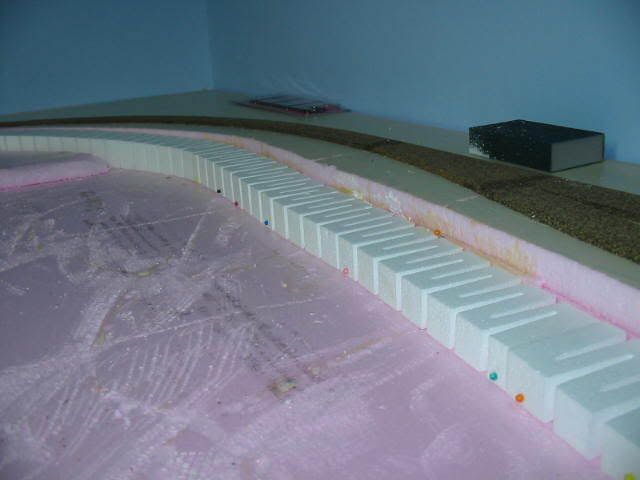
This picture shows the same grade with scenery beginning to be applied:
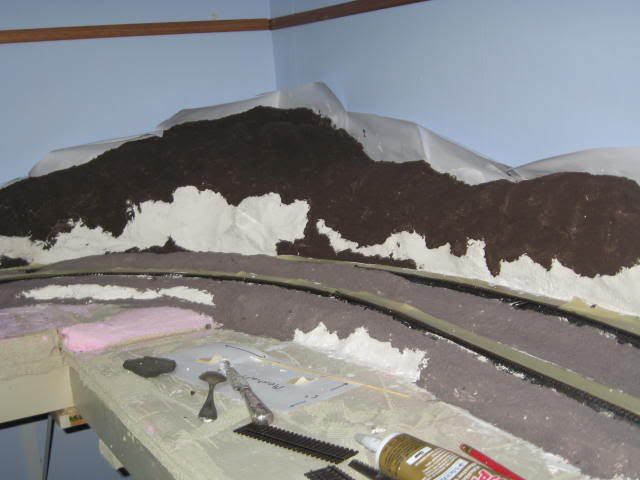
Greetings,
I am using them too. I like the fast install, being able to try different locations for the inclines, and no math. However, the change from angle to flat has caused me some problems. The first layout I used them had sectional track. In one location I had a track section end right at the top of the incline and the next section start on the flat. This made a kink once all was glued in place. I did not know it would do that when I was test running the trains as the engine weight moved the track around and self corrected.
Once the track was glued in place the kink caused the fuel tank of the engine to scrap the joint of the track. There was a massive explosion and the train company was put out of business… Sorry, got carried away. [:D] The kink did cause derailments, couplers sliding apart, and even sent an engine to the floor. I had to rip up the track and sand the transition from the top of the incline to the flat to get a smooth leveling out of the engines and rolling stock. I also found that the bottom of the incline was causeing the engines and cars to make a sudden change. This was not a problem like the top was but it did look odd if you were watching that spot when a train came through. I did get a few derailments there but they were very rare.
On my new layout I will be using the WS inclines again but this time I will correcting the abrupt incline change problem from the start. The start of the incline will get a fillet to gently move the engine onto the incline. The top too will be rounded and smoothed out to prevent the sudden change from angled to flat. I am also using flex track this time.
On Joe Fugate’s Siskiyou line forum there is a thread about grade changes. This is in regards to using risers and either spline or plywood road bed but the information is still good.&nbs
As mentioned in the epost above. Make sure you have no track joints at the start or the end of the incline. Make sure you use a long piece of flextrack and center it on those joints.
Magnus
By my math, you will need a little more than 16.5 feet to rise to 4" on a 2 percent grade (200 inches to rise 4 inches).
I ran my cork roadbed right through the grade. You can use he WS product at the top of your 4" rise, but I think it’s cheaper to use other material (such as regular foam) at the top. I installed another level of benchwork myself.
Most of my layout is flex track, so that helps here. I was already thinking about the joints and not locating them on the transition areas. That creates a pinch point and will certainly lead to problems. Thanks for the assistance. Now off to the shopping!
I am a fan of them also, but will need somthing else for my helix[banghead]
All you have to be careful of is to use a foam friendly glue, but you’ve been using foam already so you knew that. I have used the risers and I also use sections of extruded foam, sometimes in combination with each other. I’m wondering why you wouldn’t use the WS inclines on the descent also. One thing you do have to watch for, whether using the WS products or you’re kitbashing inclines out of foam, is the area where you go from incline to level. Make sure it’s a gradual as you can make it, with no sudden transitions. Have to say though that I love the WS inclines… makes life a little easier and I’m all into easy!
Jarrell
I plan to use the risers for both ends of the transition. 16’ to ascend and 16’ to descend. I was wondering more about the 8’ section in-between that I plan to build. 2" foam stacked 2 high should work fine here.
Are 18" radius sections too sharp to use? 22 or greater would be better huh? I will have some of the radius on the transition sections.
I plan to use the risers for both ends of the transition. 16’ to ascend and 16’ to descend. I was wondering more about the 8’ section in-between that I plan to build. 2" foam stacked 2 high should work fine here.
Are 18" radius sections too sharp to use? 22 or greater would be better huh? I will have some of the radius on the transition sections.
Always go as wide as you can. 22 is better then 18. Remember that on an incline the stress is already high on the rolling stock, adding sharp curves are not a good thing. Absolutely avoid a tight S-curve.
Here is my layout and use of WS products. I do have an S-curve as you can see and despite it being more then 36" radius it can cause some trouble. Not much when I perfected the track work but it was a sensitive spot for my CX cars.
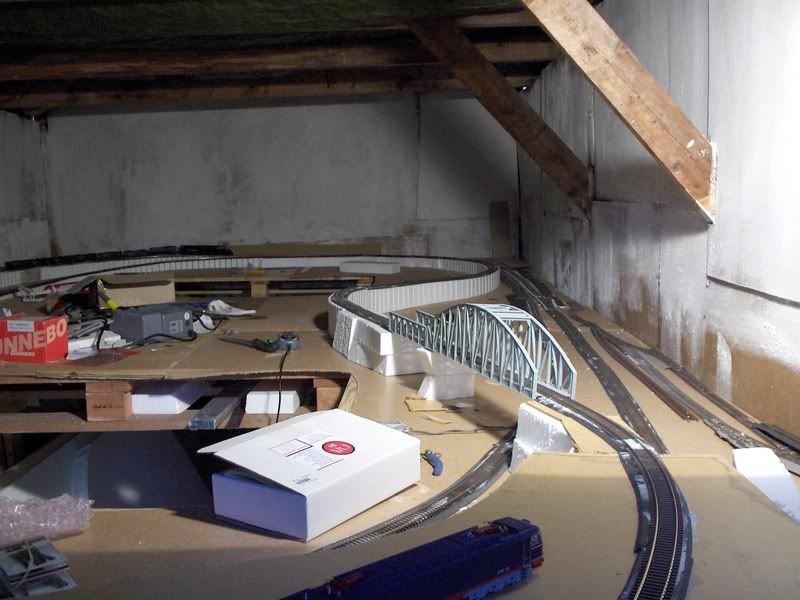
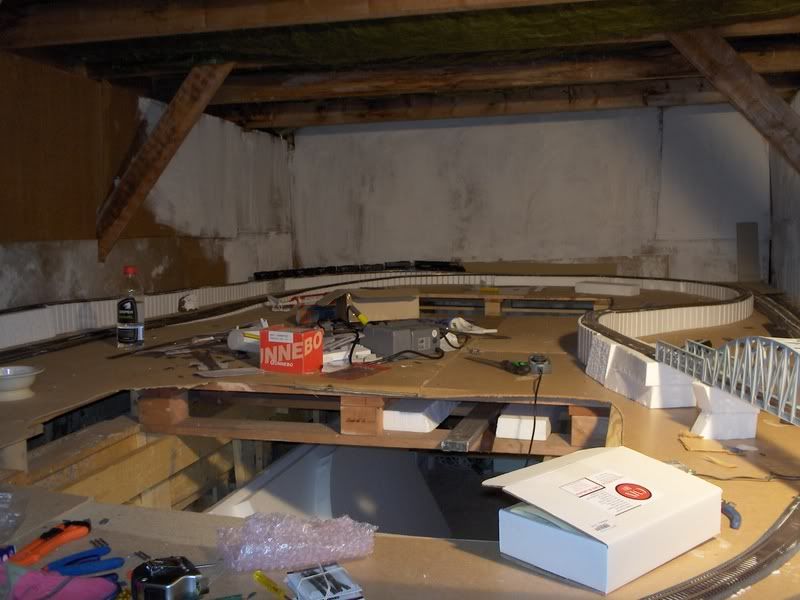

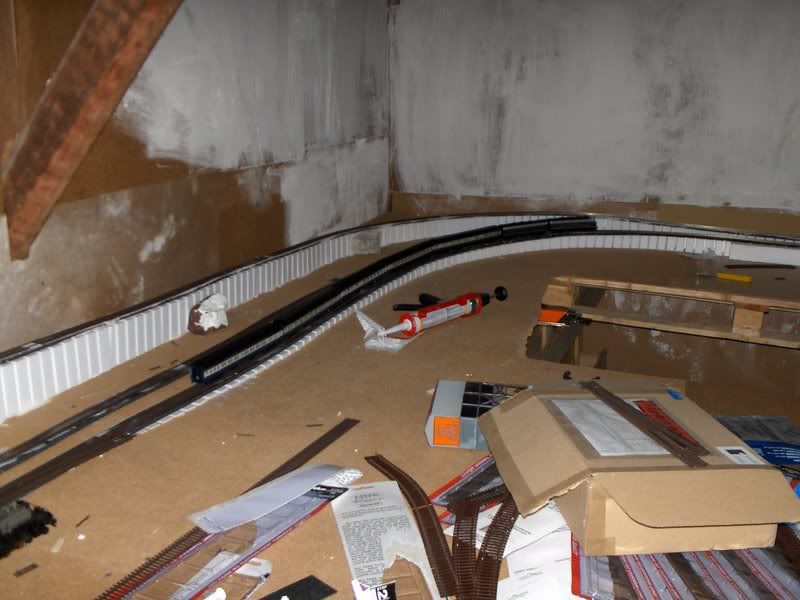
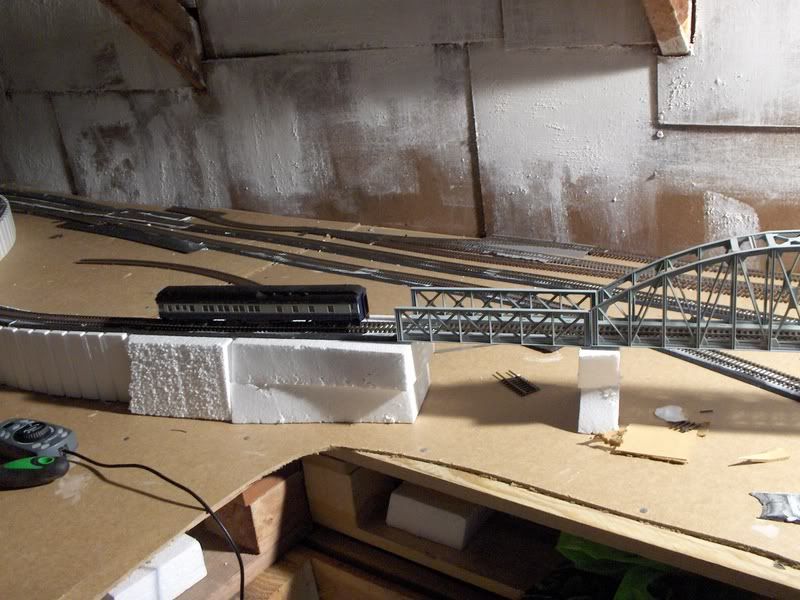
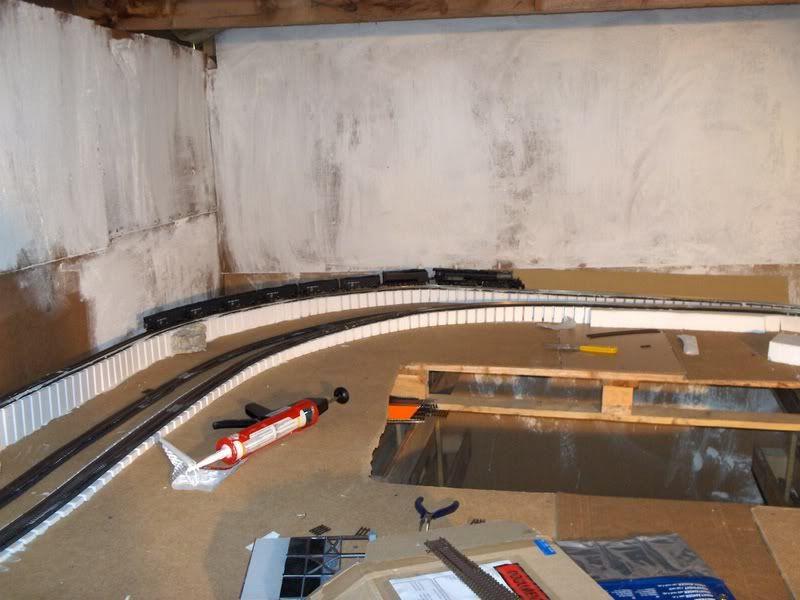
Magnus
On the problems from flat to incline…the solution is to ease the transition with a dollop of their “foam putty” to ease the abupt switch from flat to incline, it smooths out the dip. Smooth it on, and sand it to fit the transition.
A cheaper option to the “foam putty” I’ve found is lightweight patching spackle. I use Red Devil patching spackle. It is, for all practical purposes, identical. Like a lot of the ancillary WS stuff, “foam putty” seems like something just repackaged and up-priced, in this case lightweight patching spackle.
The 3% incline set is a nice and smooth look, and will get you to 4" in 12 feet. The 4% grade looks a little steep to my eyes, I tried it and replaced with 3%.
On the problems from flat to incline…the solution is to ease the transition with a dollop of their “foam putty” to ease the abupt switch from flat to incline, it smooths out the dip. Smooth it on, and sand it to fit the transition.
A cheaper option to the “foam putty” I’ve found is lightweight patching spackle. I use Red Devil patching spackle. It is, for all pratical purposes, identical. Like a lot of the ancillary WS stuff, I suspect “foam putty” is just lightweight patching spackle repackages and up-priced.
The 3% incline set is a nice and smooth look, and will get you to 4" in 12 feet. The 4% grade looks a little steep to my eyes, I tried it and replaced with 3%.
I have all small steam ( 4-4-0 and 2-8-0 ) and have no immediate plans for any heavy mountains or other large steam loco’s. That’s why I’m planning on the 2%. Although I do not pull alot of freight, 6 -7 is my maximum, I worry about the small engines being able to pull up the grade. Am I way off here? Can a 3% work?
On the problems from flat to incline…the solution is to ease the transition with a dollop of their “foam putty” to ease the abupt switch from flat to incline, it smooths out the dip. Smooth it on, and sand it to fit the transition.
A cheaper option to the “foam putty” I’ve found is lightweight patching spackle. I use Red Devil patching spackle. It is, for all pratical purposes, identical. Like a lot of the ancillary WS stuff, “foam putty” seems like somethiong just repackaged and up-priced, in this case lightweight patching spackle.
The 3% incline set is a nice and smooth look, and will get you to 4" in 12 feet. The 4% grade looks a little steep to my eyes, I tried it and replaced with 3%.
I’ve used spackle to. The transition area doesn’t have to be very long, preferably it should be the length of the longest piece of equipment. But in my experience, even a little helps.
Magnus